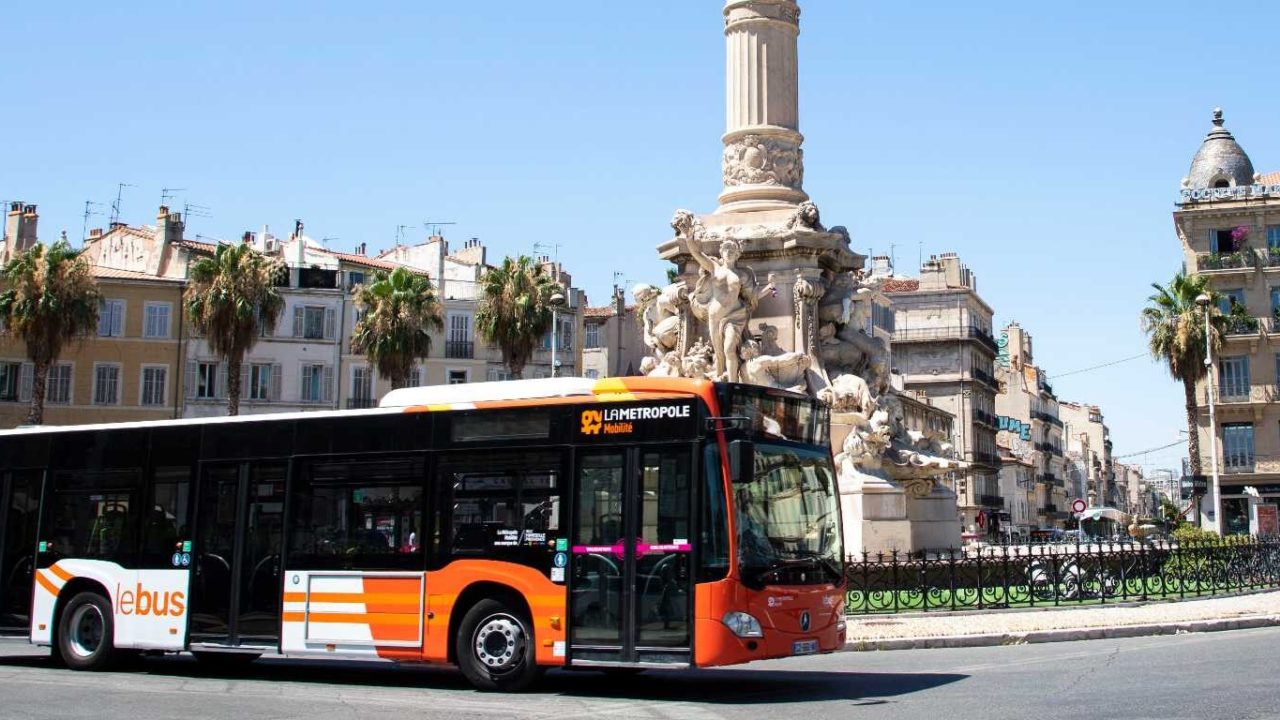
In an exclusive interview, Audrey Gatian, Deputy Mayor of Marseille in charge of mobility and city policy, sheds light on the city of Marseille’s ambitions in terms of mobility, the challenges and opportunities related to the development of mobility hubs and their transition to a more sustainable mobility.
Marseille’s mobility landscape
From our first exchanges, Audrey Gatian made the observation that “Marseille is very car-oriented”, recalling that the city is one of the most congested in Europe. Faced with this observation, Audrey Gatian and the municipality aim to “change the paradigm” of mobility by proposing a different vision of the city. To achieve this, public transport, pedestrian paths and the development of other forms of mobility (bicycles, micro-mobility) are the preferred levers. The challenge facing the city of Marseille is twofold: to reduce air pollution and improve the quality of life of the people of Marseille. Audrey Gatian deplores the fact that the city of Marseille is “behind” in terms of mobility, citing the example of Toulouse (Marseille, the second largest city in France, has two metro lines and two tramway lines, whereas Toulouse, the fourth largest city in France, has just as many and is also planning a third metro line).
In terms of public policy related to mobility, Audrey Gatian reminds us that the organizing authority for mobility is the Aix-Marseille Metropolis. The city of Marseille, the main municipality, is therefore working with the Metropolis on this issue.
The use of the car is firmly anchored in Marseille, and the elected representative shares with us that there is “this almost caricatured impression that the people of Marseille want to go to the sea with their cars almost on the beach”, justifying that this image can be explained “because nothing has been put in place so that the people of Marseille can go to the sea in another way”. This is a typical case where the development of the public transport offer would reduce the use of the car.
The upcoming arrival of the Low Emission Zone represents an opportunity
After a legal analysis, it was found that the implementation of the Low Emission Zone (LEZ) in the city of Marseille falls under the police powers of the Mayor of Marseille. As a reminder, these zones are intended to reduce air pollution, which is welcome for Audrey Gatian: “It is very good that the law obliges us to do so, clearly we have an air pollution problem in Marseille that we need to solve”.
A necessary prerequisite for the implementation of an EPZ is public consultation. The city of Marseille had the opportunity to organize this consultation at the beginning of the year, but refused to do so, as the health context at the time only allowed this consultation to be carried out digitally. This could potentially pose difficulties of inclusion, especially for people who are not used to public consultations and, above all, to online consultation. There was a risk of over-representation of “consultation regulars” in the panel.
In conjunction with the State, the consultation is scheduled for the fall, this consultation on the traffic order and its perimeter. For Audrey Gatian, the EPZ is a real opportunity: “We want to make the EPZ a real lever for change in mobility in Marseille”, thus enabling a rethink of the way people travel in the city.
The mobility hubs approach
This is one of the particularities of Marseille: the city has 12 train stations! These may be underused, but they constitute a solid base of infrastructure for mobility. Mobility hubs are therefore designed primarily around railway and metro stations, with the aim of making them areas with several types of mobility. Stations allow, for example, to operate other interconnections (a priority topic for the city of Marseille).
In line with the forthcoming deployment of the EPZ, the mobility hubs allow for the development of urban logistics, which is booming in Marseille (cargo bikes and alternative logistics): “we have several companies that are really only in this field that are emerging, and that are looking for local sites,” notes Audrey Gatian.
The question of developing services in the mobility hubs is central, as the deputy mayor reminds us that “when there are no services, they don’t live, and they are underused. These services should be designed according to the neighborhood and its history. Involving the residents in selecting the services will also help to ensure that these places are more appropriate.
The development of mobility hubs, particularly around train stations, means rethinking the environment and making it “a place to live”, a particularly high priority for Marseille.
Calls for expressions of interest as a lever for experimentation
The city of Marseille recently initiated a Call for Expressions of Interest, or AMI (a method of pre-selecting candidates who will be invited to bid on future public procurement procedures) with the objective of improving the bicycle network. Lime has been selected to deploy its EVBs to complete the self-service bicycle offer. This experiment will last throughout the summer and an assessment will be made. The same mechanism was used for the deployment of supervised bicycle parking this summer, the objective being to go faster than the production and deployment of bicycle racks.
The City of Marseille’s approach to the AMI is to provide a complementary, but not competing, offer to the systems already in place, particularly those of the Metropolis.
Keep in touch: [email protected]

